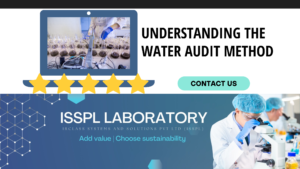An Overview by Team ISSPL - Analytical Testing Laboratory in India
ToggleGroundwater resources are integral to any country. It is vital for the country’s agricultural sector. In India, groundwater constitutes a significant portion of the country’s economy. Groundwater is used for irrigation. It is essential and often the exclusive water source in areas with scarce rainfall. Groundwater is also a primary source of drinking water in multiple countries. In fact, millions of people in rural areas depend on groundwater where access to surface water sources is challenging or limited.
Other than mundane requirements, groundwater resources are integral for industrial and commercial activities. One needs groundwater for manufacturing, mining, and power generation. Thus, the availability and sustainability of groundwater resources in India is integral for more than one reason. It has a significant impact on the diverse aspects of the country’s socio-economic development.
Groundwater level reflects the status of groundwater in an area. In India, the Central Ground Water Board (CGWB) and State Governments govern the groundwater status. Groundwater resources assessment is a significant process. It is carried out periodically jointly by State Groundwater Departments and the Central Groundwater Board. It happens under the guidance of the State Level Committee on Ground Water Assessment at State Levels.
Factors shaping India’s groundwater landscape –
- The prime source of groundwater refill is through monsoon rainfall. The rainfall contributes more than half of the total annual groundwater recharge. Rainfall during the monsoon season helps the different Indian states like – Goa, Gujarat, Jharkhand, Kerala, Mizoram, Rajasthan, Madhya Pradesh, Manipur, Meghalaya, and Daman & Diu.
- Groundwater recharge from rainfall can be from the monsoon and non-monsoon clouds. Apart from natural rainfall, one can find significant sources like – canal seepage, return flow from irrigation, recharge from tanks, ponds, and water conservation structures.
- Natural stresses can impact the groundwater refill requirements, including climatic parameters, recharge resulting from irrigation systems, waste disposal, etc.
- The annual groundwater recharge is also called dynamic groundwater resource, and the amount varies for the entire country. The impact of pollution and industrial contaminants affect the annual extractable groundwater resources. Thus, testing is an indispensable choice.
- The annual groundwater extraction rate has increased exponentially due to the lack of natural water. It is essential for agriculture because it is the predominant consumer of groundwater resources. Therefore, protecting the safety index of groundwater is integral in order to maintain the quality of agricultural operations.
- The decline of water level across the country is quite prominent in the different states and union territories of Goa, Haryana, Himachal Pradesh, Punjab, Rajasthan, Tripura, Jammu & Kashmir, Madhya Pradesh, Odisha, and West Bengal. The declining rate is alarming, and pollution is among the prime reasons. The unchecked extraction rate is a significant reason as well.
Groundwater pollution – The need for testing
In India, more than half of the urban and rural population depend on groundwater supply. The percentage is around 80% for the rural sector. They use groundwater for domestic purposes. However, the recent reports on groundwater assessment make it challenging for consumption.
More than 33% of the groundwater resources in India are unfit for consumption. Pollution and other industrial contaminants have worsened the situation to the next level.
Explore the different types of pollution testing for groundwater to ensure an informed solution. You can connect to a laboratory and get the testing done. It will help you make suitable choices and ease the worries about groundwater utility.
- Nitrate testing – Groundwater nitrate or (NO3−) contamination is an outcome of multiple operations on the ground. It can be due to the agricultural runoff, resulting from the over-application of nitrogen fertilizers. In contrast, it can be the outcome of the disposal of untreated human or animal waste. Groundwater nitrate contamination can exceed the GOI permissible level. The permissible level is 45 mg/L, and it has already crossed in 11 Indian states. The excessive contamination from nitrate compounds makes it mandatory to focus on modern testing measures.
- Industrial pollutants – Groundwater pollution caused due to industrial sewages is a prime concern in multiple Indian cities. The rising issue is evident in metro cities, including Delhi, Mumbai, Kolkata, Ludhiana, and Kanpur. For instance, the Paris-Green or copper acetoarsenite is a type of insecticide that creates an adverse impact on groundwater. The unchecked extraction amount of Paris-Green from the local factory led to extensive groundwater pollution of hand tubewells. One cannot use it for drinking requirements. These are life-threatening aspects and require a suitable testing measure. Laboratories with world-class facilities can offer an end-to-end solution to ease the assessment requirements.
- Fluoride contamination – Fluorosis is among the prime sources of groundwater-related disease in India. In fact, India is among the most severely polluted countries worldwide. In India arsenic and fluoride pose the largest threat to public health, making it inappropriate to consume. Laboratories can use chemical testing measures to review the presence of fluoride in the groundwater sample. Based on the results, one can determine the suitability of the sample to consume or use for varied purposes.
Water governance standard – Testing and compliance
The WGS, or water governance standard, is a rating and certification program that promotes and facilitates the rural communities for groundwater protection steps. It works towards nurturing water-smart attitudes among the users and defining the essential behaviors to promote better investments. The WGS identifies the complex challenges of water scarcity and promotes optimal water management.
As a result, it promotes sustainable, equitable, and efficient management solutions to water resources, including groundwater protection measures in rural India. The WGS can impact water-related behaviors and alter the approach towards direct resources in the water sector. With the best-in-class measures, one can achieve sustainable water outcomes.
Rely on the extensive testing solutions.
Recognize the need to conduct groundwater assessment checks and ensure a hassle-free outcome with the top laboratories. Utilize world-class groundwater assessment and treatment techniques for safeguarding the groundwater source.
With the top facilities at the testing lab, determine the pH level, contamination percentage, and much more. Make an informed choice with the professional testers and ease the requirements.






